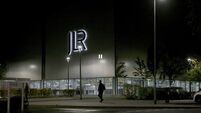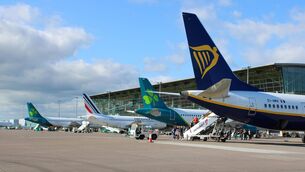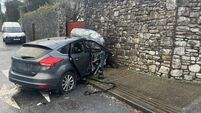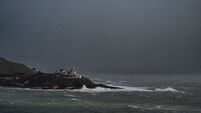The Irishmen who fought in the Rising, but for the British

ON November 13, 1916, Private William O’Riordan of the 10th Battalion, Royal Dublin Fusiliers, was killed in action at Beaumont Hamel, during the Battle of the Somme. O’Riordan was from Kilcolman Park, Enniskeane, Co Cork.
His father was a mason; his mother a schoolteacher. The family could speak Irish. William O’Riordan has no known grave, so he is commemorated on the Thiepval Memorial on the Somme. He was only 17 years old when he died.
However, O’Riordan had been wounded earlier in 1916, not in the trenches of the Western Front, but on the streets of Dublin during the Easter Rising.
The 10th Battalion, Royal Dublin Fusiliers, was just one of many Irish units in the British Army called upon to help defeat the Rising.
Along with the 3rd Battalion, Royal Irish Regiment, and the 3rd Battalion, Royal Irish Rifles, this unit was already in Dublin when the rebellion began.
Other units were soon summoned from the Curragh, from Templemore, from Cork City, and from across the province of Ulster.
These Irishmen, in British Army uniform, outnumbered the insurgents on the first day of the Rising, and, as more Irishmen in khaki were summoned to Dublin as the days went on, they soon outnumbered the rebels by three to one.
The reason: Thousands of Irishmen had enlisted in the British Army at the start of the First World War to further the cause of Irish independence in the form of Home Rule.
For regular updates on news and features (as well as twitter action action as it may have happened 100 years ago) to mark the revolutionary period follow @theirishrev HERE
Many were still stationed in Ireland — either waiting to travel to the trenches or serving as home-service soldiers — when the Rising began. As the only British Army troops on hand, they were the first to respond to the rebellion.
Also serving in the same unit as William O’Riordan during the Rising was Lieutenant Gerald Neilan, from Ballygalda, Co Roscommon. A past pupil of Clongowes Wood and a veteran of the Boer War, Neilan was probably the first British Army officer shot and killed during the Rising.
As his unit marched out of Royal Barracks (now Collins Barracks Museum) and down the Liffey quays, it was fired on by Captain Seán Heuston and his Volunteers. Positioned inside the Mendicity Institution, on the southside quays, it was their job to slow the British Army’s advance into the city centre.
Neilan was a dedicated Irish nationalist, and had likely been involved in the Howth gun-running before the Irish Volunteers split in 1914 over the issue of supporting the British war effort. Ironically, as he lay dying on Ellis Quay, his younger brother, Arthur, was serving with the Irish Volunteers in the Four Courts, just down the road.
Arthur Neilan survived the Rising and died in 1944. He was then laid to rest in Glasnevin Cemetery, alongside his British Army brother.
In Gerald Neilan’s final moments, Captain John Esmonde, from Drominagh, Terryglass, Co Tipperary — another officer in the 10th Battalion, Royal Dublin Fusiliers — brought a priest to Neilan’s side so that he could receive last rites.
Esmonde was a Home Rule MP for North Tipperary, and later served as Fine Gael TD for Wexford (1937–44 and 1948–51). After the 1948 general election and the formation of the first inter-party government, former IRA chief of staff and Clann na Poblachta TD Seán MacBride suggested Esmonde as a possible candidate for Taoiseach. Why? Because he had had no links to either side during the Civil War. Two days later, on Wednesday, April 26, 1916, the British Army finally captured Captain Seán Heuston, and the garrison of the Mendicity Institution. The man who took Heuston’s surrender was a former close friend.
Lieutenant William John ‘Jack’ Mount, from Belturbet, Co Cavan, a Gallipoli veteran by 1916, had worked alongside Heuston before the war and the two had been very good friends. Both men had worked as clerks for Great Southern and Western Railway, in Kingsbridge Station, Dublin, which was later renamed Heuston Station in Seán’s honour.
Mount pleaded for clemency for his friend, but it came to nothing. Meanwhile, days before his execution, Heuston asked the governor of Arbour Hill Prison to thank Lt Mount for the kindness he had shown him.
On the far side of the city, during the first day of the Rising, another group of soldiers who found themselves on the receiving end of rebel fire were the Georgius Rex (Latin for ‘King George’). A ‘Dads-Army’ style home defence force formed a number of years earlier, Dublin wits quickly nicknamed them the ‘Gorgeous Wrecks’, ‘God’s Rejected’, and the ‘Methuseliers’.
Having heard word of the outbreak of the Rising, they quickly marched back into Dublin from an exercise at Ticknock, and were fired on at Northumberland Rd by Lieutenant Michael Malone and his Irish Volunteers .
Tragically, the Georgius Rex carried no ammunition for their antiquated rifles, and so they were essentially unarmed. By the time Malone realised who he was firing at and called a halt, several had been killed and many more wounded.
One of the first to be shot — if not the first — was Sub-Commandant Frank Browning. From Rathmines, Dublin, Browning was 47 years old. He was also a former Irish international cricketer and rugby player. At the time of the Rising, he was also the president of the IRFU.
He did not die straight away, however. Hit in the head by rebel fire, he died two days later of his injuries. To this day, there is a plaque in Lansdowne Road/Aviva Stadium commemorating his death.
The battlefields of the First World War were not the only graveyards of Irish soldiers during 1914–1918. In 1916, at least 41 Irishmen were killed in action while serving with the British Army in Dublin, and 106 more were wounded. Many others came through unscathed, but did not survive the trenches.
These men might not have joined the British Army to secure an Irish Republic, but many joined to fight for Irish independence as they saw it. Even if they enlisted for mundane reasons, they were still Irishmen. They still deserve to be remembered.















